Embed presentation
Download to read offline
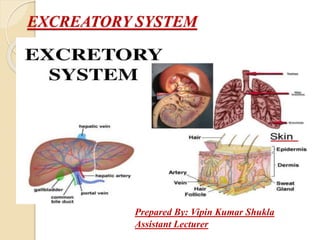
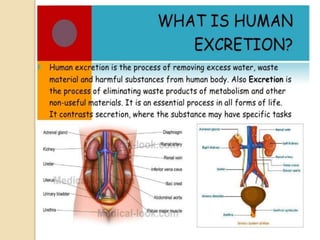


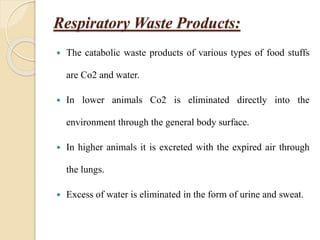


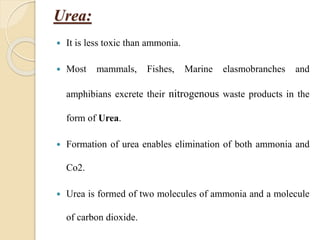









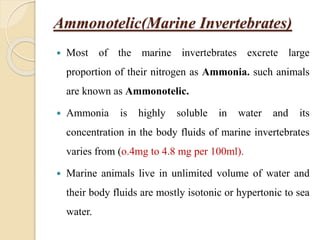

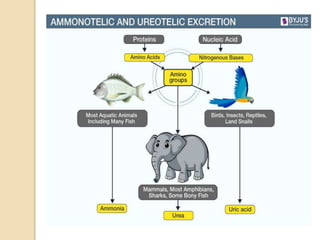
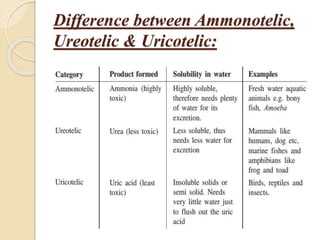







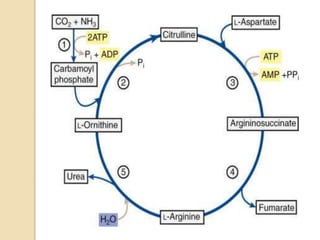

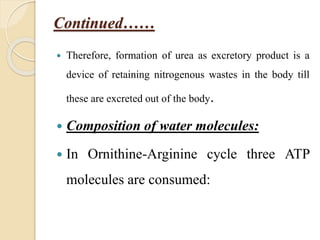








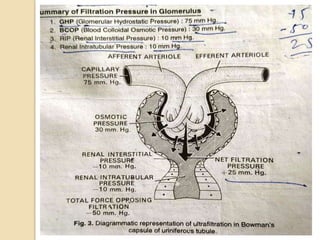




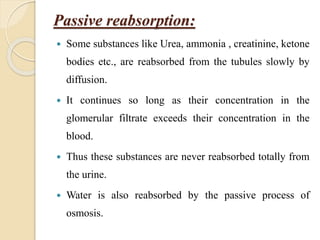


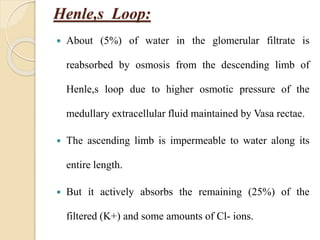






The document discusses the excretory system and its mechanisms in vertebrates, focusing on the role of kidneys and the formation of urine. It categorizes nitrogenous waste products into ammonia, urea, and uric acid, detailing their toxicity and methods of excretion based on the animal's environment and physiology. The document also explains the processes of ultrafiltration, tubular reabsorption, and tubular secretion involved in urine formation.




















































